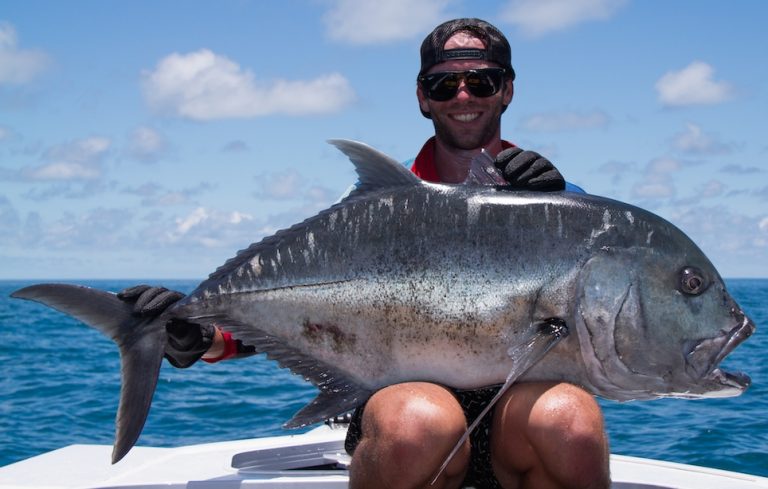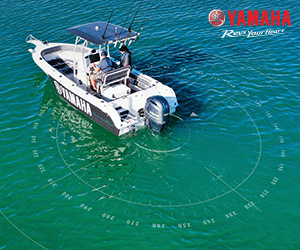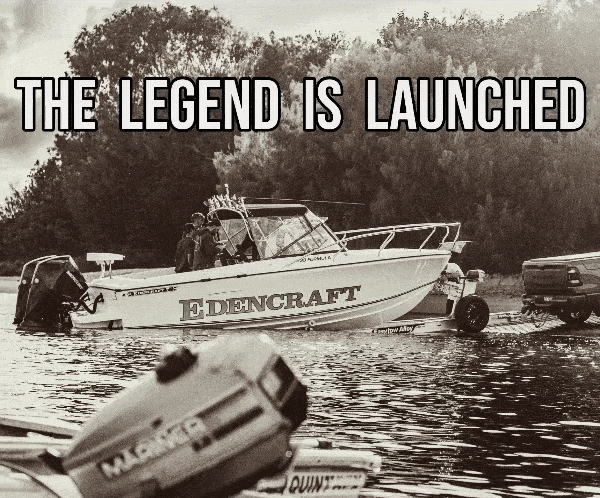GT masterclass – Tom Smith
Give and take. In one way or another this is an adage that I’m sure applies to some area of your life. Generally speaking, it represents a healthy balance of sorts-an even keel or a fair compromise. The record breaking El Nino, however, has presented a cruel example of how mother nature can give with one hand, blinding you with gorgeous days of hot fishing action, and cruelly take with the other by way of massive and devastating coral bleaching. Give and take…
In my neck of the woods, February and March were characterised by unprecedented periods of doldrum-like weather. This was the result of a very lacklustre monsoonal period-monsoonal activity that almost never arrived, which of course is directly associated with the gripping effect of El Nino across the Pacific. Of course, as a hardcore sportsfisho, I binged on surface sessions on the isolated outer-eastern reefs of the Torres Strait, of course I felt like I had won the lottery, and of course I, along with my regular fishing acquaintances, carved a swathe through a GT population that are often inaccessible. I felt like a legend, and had grand plans of writing a piece for Fish and Boat of GT Popping and Stickbaiting triumph… And then the joyous vanity of fishing success was smashed to pieces by the glaring reality of what this El Nino was really about-a coral wreaping from warming water on the comparatively shallow reef grounds of the Torres Strait. A slow, slow cooking effect from a lack of cloud cover, of mild monsoonal activity, and minimal cooling fresh water run-off. But this is a fishing magazine-and a good one, and there is value to be gleaned from those doldrum days in February and March. I most certainly have gained knowledge and affirmed theories towards targeting big GT via a series of 5 or so long-range trips that all produce fish upwards of 20kg. So here are a few gold nuggets of advice for targeting big GT in my home grounds of the Torres Strait-perhaps they will aptly apply to your own backyard, or trigger a thought process that leads you to your own improved success.
It is really important to understand the key elements that characterise great GT ground. Once you have the hang of what you are looking for you can more effectively, and efficiently channel your efforts. I have found this to be the slowest learning curve for me in my area. The marine environment around the very tip of Queensland consists of a plethora of inshore islands and impressive headlands that are hammered by current, as well as an abundance of tidal coral reef structure. Our currents here a like windscreen wipers on a car and swing from right-to-left, and left-to-right a number of times every day. I must stress that this current behaviour is not exclusively the result of an incoming and outgoing tide, though that has some influence. It is, however, more the result of two deep oceanic bodies of water interacting with one another across the shallow, rising sea floor of the Torres Strait, which is, at its shallowest transect, only 10 meters deep-and that is across a 140km straight line between the tip of Cape York and mainland PNG. When hunting GT this has huge implications, for example one island can present a bait-holding pressure point when the current is moving left-to-right, but completely lack the presence of bait, and therefore GT, when the current has turned 3 hours later. Therefore you can end up targeting two completely different sets of terrain over the course of a single days fishing.
‘Pressure points’ and ‘break sides’ are two synonymous phrases that you are certain to encounter often when you begin interacting with GT fishing circles. Chances are you already have some experience, and some knowledge of what these represent-particularly in reference to locating bait and pelagic fishes. Initially it is key to understand that this refers to the side of structure that is being directly hit by current. That simple description almost contradicts why bait would ‘hold’ in this area-wouldn’t they just continue to be washed away current? The pressure point, or break side, actually represents a confined, powerful vertical eddy-the current hits the rise of the structure, surging upwards and back over itself; the effect is the same as mullet resting in the eddy of a pumping creek drain (only this is horizontal instead of vertical). Spotting a vertical eddy or pressure point is pretty easy-just approach the structure from up-current and look for the smoothest section of water sitting against rock, island, reef, wreck or whatever represents the structure you are fishing. The more pronounced the smooth water appears, the better a pressure point is. Occasionally a pressure point (the smooth water section) will be bordered by quite violent surface currents, and that is a bloody good thing. Chances are the pressure point will hold a good show of bait, and it’s certainly best to assume it does before getting to close and proving the point on your sounder!
I am very confident that the perfect pressure point will almost always give you a crack at a big GT. In my opinion the very best example of a perfect pressure point is a relatively smallish piece of solid structure, such as an exposed sand cay or rock island that is down current, but in closing proximity (2-5 nm), to a vast reef system on an outgoing tide. North Brother, in the Adolphus channel is a perfect example of this. As the tide drops, huge amounts of water fall from the North and South Ledge reefs, and if the current is working from right-to-left, an excellent pressure point develops on the South-East edge of this small rocky island. You can almost see all those fusiliers and juvenile reef species in a mad dash for cover as they are flushed from their shallow refuge towards this isolated piece of structure… Developing a circuit of pressure points such as this for alternating current scenarios gives you the best possible chance of multiple shots big GT over the course of a single session.
Certainly, much of the hard work of GT fishing is in consistently locating big fish on pressure points. It’s important to acknowledge that big GT-trophy GT, are generally considered solitary fish. However, on occasion, I have found fish over 30kg hunting in pairs, but I have certainly never experienced big GT schooling and feeding simultaneously. I have also seen a 20+kg fish shadowed by even bigger fish during a fight, but this is the exception and not the rule. Big GT are definitely spooky characters and I consider each pressure point to realistically only offer one shot at a big fish before it pays to move on. Obviously the key to success is to approach your pressure point from a great distance, with stealth-though you don’t need to be under electric power, and at times this is not an option in strong currents anyway. I would, however, definitely advise an approach of 5 knots or less from 500m out-it’s amazing how this can test your patience, but it is necessary! Begin casting from 150m or so-even if your best cast is only 50m and ensure your driver is controlling your approach with as much stealth as is possible.
Gear choice; It’s your choice. I’m not going to give a detailed lecture on the PE scale or the intricacies of leader choice, and the like-in fact if I preached the use and benefits of my go-to set up I’d probably induce frowns of disapproval. Instead, I’ll just present some thought-pieces… Lighter braid is going to improve your casting distance and reduce the occurrence of wind-knots. So called ‘super knots’ such as the famous FG knot allow for significantly greater leader lengths and are very forgiving on rod guides. Stickbaits often entice strikes from a wider range of species-some particularly undesirable ones: longtom, queenfish and small reef species, whereas large poppers tend to limit by-catch. Trebles offer a higher hook-up rate, yet are susceptible to straightening through a heavy-handed angling approach. And lastly, contrary to some of the literature out there, I find GT to be a fair fighting fish that prefer a deep-water battle, so consider the country you are casting over, and if possible limit the amount of shallow structure between you and your lure.
GT fishing is about as good as it gets for me. It is a strategic hunt, followed by explosive top-water strikes and a physical, often painful, battle. By understanding the mechanics of currents and pressure points in your local waters you can more efficiently focus your efforts. Remember that each piece of structure has potential to be an effective pressure point at certain point in time, and if you are unsure when that might be, revisit it throughout the day. Draining reefs should always be considered as a departure point for bait, and is a clue to determine which pressure point that bait is likely to arrive at. For each pressure point, apply stealth and patience to your approach, maintain a respectable distance and cast like it’s an Olympic event. Lastly, have a game plan for your hookup-have a discussion with your driver, know where your deep water is and anticipate the movements of the fish. Hopefully you can glean some new knowledge from this article-even if it a just a single titbit, that contributes to more GT over the gunnels each and every session.





